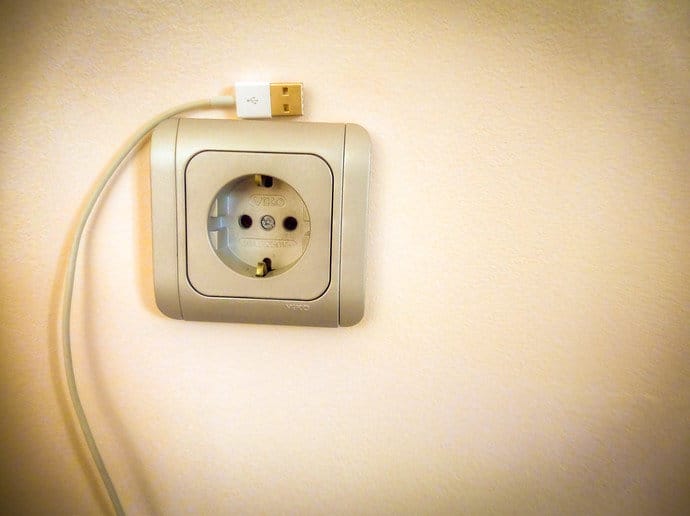
Keeping your gadgets charged can be a challenge when you’re pressed for time but plugging in your devices to a wall outlet can decrease recharge times significantly. Combined with the right charger, you can bring your batteries closer to 100% faster, so they’re powered up as much as possible before your next flight.
Outlets Aren’t Created Equal
You may have noticed how variable recharge times can be on your smartphone when plugged into your car on the way to work versus plugging in to the office computer. The reason is because not all USB ports and cables are made the same. Depending on how old your laptop is, it’s likely either equipped with a USB 2.0 or 3.0 (or higher) port. (Here’s how to find out which USB ports you have on Windows and OS X.)
A USB 2.0 port can only supply 500 milliamperes (mA) of electricity; a USB 3.0 port can give you up to 900mA; while the latest USB-C tops out at 5000mA. Depending on the device you have, the battery might be able to take 2000mA or more when charging – but the maximum electrical output of the USB port or USB outlet adapter must be equal or greater.
- Potential Bottleneck – The maximum milliamperes a device’s battery can draw can be limited by either the wall/car adapter or USB port it’s plugged in to.
All of this means you could be charging up in half the time or faster if you plug-in to a wall outlet with a charger that can take advantage of all the electricity it has to offer.
Zoom In On Output
Take a close look at your USB wall charger; somewhere on it should be the output either in mA or A (1000mA = 1A). For example, Apple supplies iPhones with 1000mA adapters but if you’re using an iPhone 6 or newer, the battery can take up to 2100mA; so using an iPad adapter means your 6s will charge in much less time. Keep in mind too, most laptops and computers don’t always supply the maximum amount of electricity to charging devices. In other words, maximum output might be 900mA but your tablet is only getting 750mA.

Power Up Your Wall Charger
Rapid chargers like the Morecoo 60W-12A give you 6 USB ports, each of which can provide up to 2400mA of power from a single wall outlet. When there’s no outlet around, PowerStick portable batteries provide up to 1000mA, both quicker and more comfortable than trying to open a laptop lid in economy class.
In case you were wondering, having an adapter that supplies more amps than your gadget can take won’t damage it, as the battery will regulate how much it takes. Also, if you really want to charge up as fast as possible, don’t use your device while it’s recharging. (And if you do end up plugging into a laptop, not using either device will allow recharges to be as fast as possible.) Finally, once you’re away from an external power source, use these tips to extend battery life for all of your gadgets once they hit the road.













